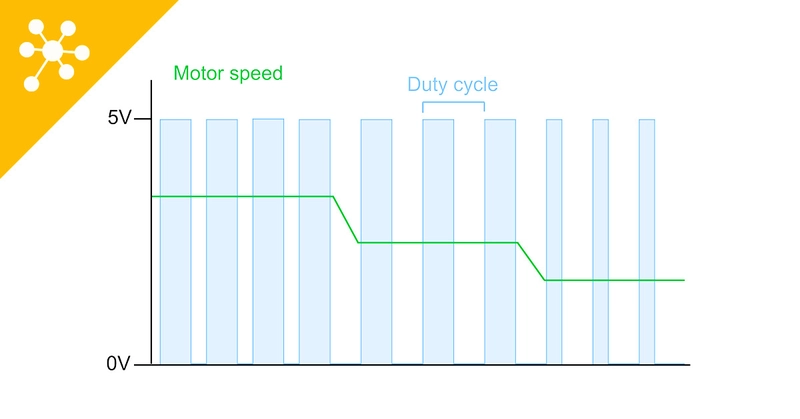
From solar charge controllers to dimmer switches, PWM is an ingenious way of adjusting power delivery
In simplest terms, PWM (pulse width modulation) is a method of repeatedly interrupting the power conveyed through a circuit, with the effect of reducing the ‘average’ power delivered. By using PWM, a system that can only supply a steady 5V, for example, can be made to do the same work as 2.5V or 4V if it is switched on for 50 milliseconds and off again for 50 milliseconds, in cycles of 0.01 second, or on for 80ms and off for 20ms, respectively.
PWM can also emulate the effect of an analogue signal, for example, when the 'on' pulses regularly increase and decrease in length, producing a wave-like effect.
One of the major advantages of PWM when used for regulation involves its high level of efficiency. Unlike potentiometers, which use resistance to bleed off some of the current as heat, the rapid switching of PWM means that close to 100% of the available power is used, just for reduced periods of time.
Here are five great applications for PWM control.
Solar charge control is one of the most popular applications of PWM. If the solar panels are supplying excess voltage during periods of intense sunlight, the controller only conveys intermittent bursts to the battery, protecting it from damage. As the battery reaches full charge, the controller tapers off the supply by introducing gradually longer breaks.
Light dimming is another common application, using on-off pulses at such a high frequency – up to several thousand times per second – that there is no visible flickering, only an overall reduction in brightness.
Motor speed can be effectively controlled with PWM, as the inertia of the motor smooths out the intermittent pulses of power.
Colour adjustment of RGB LEDs – ranging from light strips to individual components – can be achieved by PWM. By switching the duration of how long each component of an RGB system is illuminated, as well as its intensity, millions of different colours can be displayed.
Overheating protection is an excellent benefit that PWM can provide, for a variety of systems ranging from driving lights to a cooling fan.

